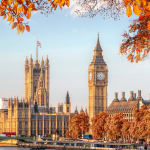The London Property Alliance commissioned this research paper to support a study trip to Paris co-ordinated in partnership with Opportunity London as part of parallel visits to the city following the Olympics.
Utilising the latest data from our Global Cities Survey, Professor Tony Travers and Alexander Jan outline the governance and market conditions which underpin the key differences between London and Paris.
Whilst the historic rivalry between our nations may run deep, the report shows many striking similarities.
It is too early to tell what sort of bounce the Olympics will provide Paris, but like London back in 2012 there will no doubt be upsides for its economy in the months following. This is reflected in growth forecasts of 5% which puts Paris ahead of London up to 2026, with its information and communication sector being the main driver.
Employment rates and transport ridership are also key areas in which Paris has displayed resilience as work patterns have changed post-pandemic. But central Paris is a much smaller market than central London, and its La Defense business district faces similar challenges to Canary Wharf. With typical French flair it intends to tackle this with a major transformation of its central boulevard and a push for more mixed used buildings.
Grande projects are a French tradition, perfectly illustrated by its ambitions plans for a £250million makeover of the Champs-Elysee. Although, like London, such plans are often fraught by political disagreement, so the path forward can be long and winding.
The report highlights that it is necessary for London and Paris to constantly renew to keep up with the fast-developing cities in the Far East, Asia, the Middle East and the United States.
We open the paper with a line from French author José Alain Fralon who famously sums up his compatriots’ feelings towards us as ‘our dearest enemies’. We would like to tag on the end of that the words, ‘and closest friends’.
Read the full report here (16 pages)

